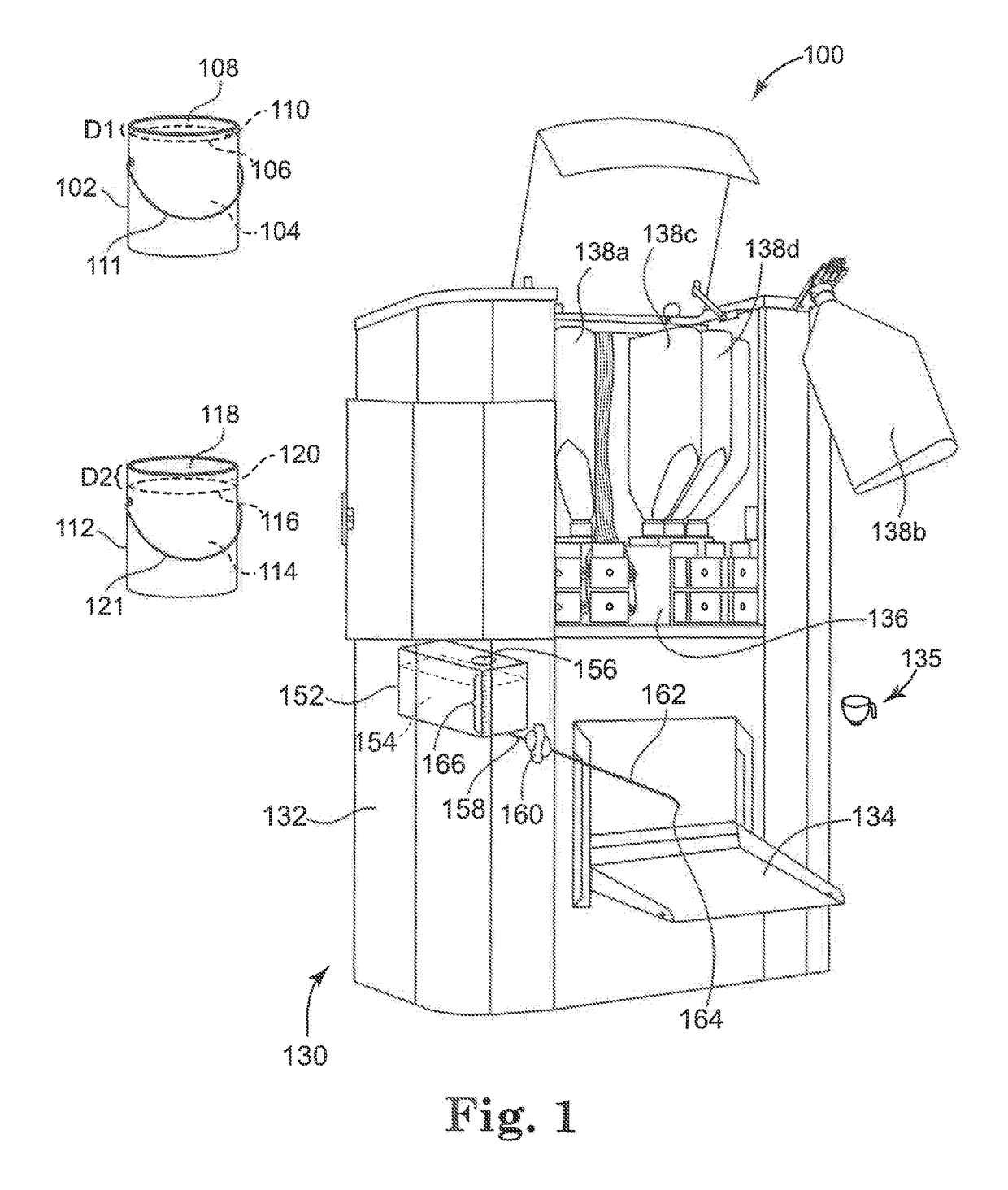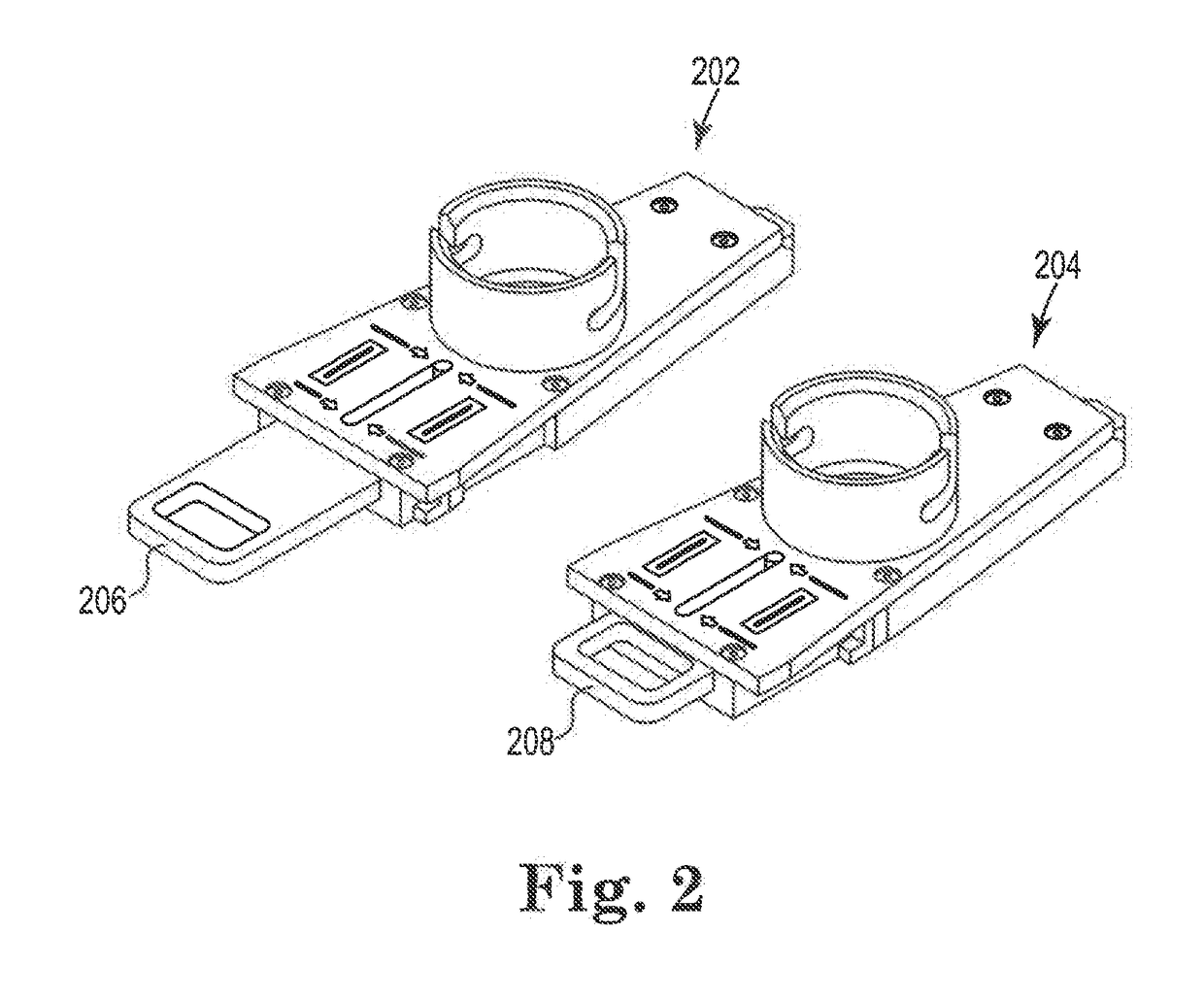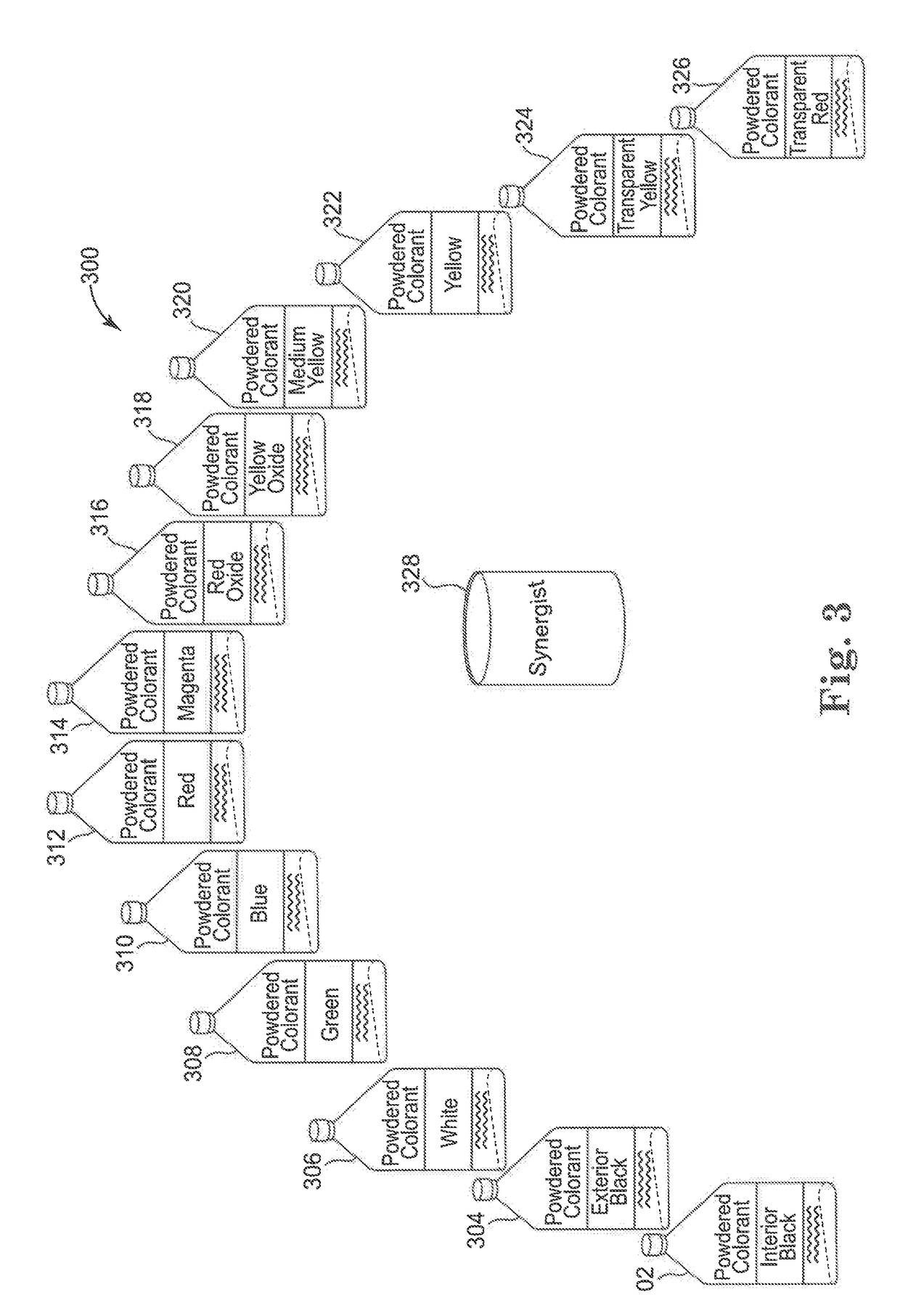Tinting water-borne and solvent-borne paints and stains with powdered colorants
a technology for architectural paints and colorants, which is applied in the direction of mixing, transportation and packaging, coatings, etc., can solve the problems of colorant shelf life expiration or dispenser plugging problems for less frequently used water-borne or solvent-borne colorants, and achieves the effects of reducing blocking resistance and viscosity drop, reducing colorant compatibility gaps, and increasing tack
- Summary
- Abstract
- Description
- Claims
- Application Information
AI Technical Summary
Benefits of technology
Problems solved by technology
Method used
Image
Examples
example 1
[0104]The synergist formulation shown below in Table II was neutralized with potassium hydroxide to lessen its acidity and the potential for corrosion or off-gassing in metal containers. A liquid, non-associative thickener was included in the formulation to impart thixotropy and reduce the potential for separation, dripping or other storage stability or dispensing performance issues.
TABLE IIIngredient%Dioctyl Maleate Cosolvent29.74RHODOLINE ASP-100 Thickener2.20RHODACAL 330 Surfactant66.08Potassium hydroxide1.98Total100%
example 2
[0105]XFAST water-only powdered colorants from BASF were added without and with the synergist described in Table II to an alkyd base paint (Ace Royal polyurethane alkyd enamel No. 245A320 from Ace Hardware Corporation) and an oil-based stain (Cabot Semi-Transparent deck and siding stain No. 0306 from Valspar Corporation). For the tinted alkyd paint and stain, tint strength and rub-up were used to evaluate whether adding the synergist during colorant mixing provided improved compatibility. The tint strength test was performed as described above, and the rub-up test was performed as follows:
Rub-Up Test
[0106]The base paint or stain to be tested is placed in a tared jar equipped with a lidded closure, closed and weighed. The inside of the lid is coated by turning the jar over and back. The jar is opened and desired amounts of the colorant and optional synergist are added based on the weight per gallon of the tinted base (viz., the base after being combined with the colorant and optional...
example 3
[0110]Using the method of example 2, the synergist formulation was modified by inclusion of various commercially available materials, such as dispersants, surfactants, compatibilizers, solvents, and humectants. XFAST water-only powdered colorant No. 1256 Yellow from BASF was tested without and with a 5 fluid ounce per gallon addition of the synergist to an alkyd base paint (Ace Royal polyurethane alkyd enamel No. 245A320 from Ace Hardware Corporation). The results are shown below in Table IV:
TABLE IVTinting alkyd base paint using water-only powdered colorants and synergist3.24 weight percent water-only powderedcolorant per gallon (3.8 L) of tinted baseTint Strength vs. NoSynergistSynergistRub-UpNo Synergist—Severe dark75:25 EG:DEG blend6558.80%Slight darkAEROSOL OT-10091.55%Severe darkBYK 9076112.24%Severe darkBYK LPN 23366129.19%Severe darkBYK-P 10483.83%Severe darkDISPERBYK 110192.71%Severe darkDISPERBYK 145117.38%Severe darkDISPERBYK 16796.14%Severe darkDISPERBYK 190548.24%Severe...
PUM
| Property | Measurement | Unit |
|---|---|---|
| volume | aaaaa | aaaaa |
| temperature | aaaaa | aaaaa |
| wet thickness | aaaaa | aaaaa |
Abstract
Description
Claims
Application Information
 Login to View More
Login to View More - R&D
- Intellectual Property
- Life Sciences
- Materials
- Tech Scout
- Unparalleled Data Quality
- Higher Quality Content
- 60% Fewer Hallucinations
Browse by: Latest US Patents, China's latest patents, Technical Efficacy Thesaurus, Application Domain, Technology Topic, Popular Technical Reports.
© 2025 PatSnap. All rights reserved.Legal|Privacy policy|Modern Slavery Act Transparency Statement|Sitemap|About US| Contact US: help@patsnap.com



